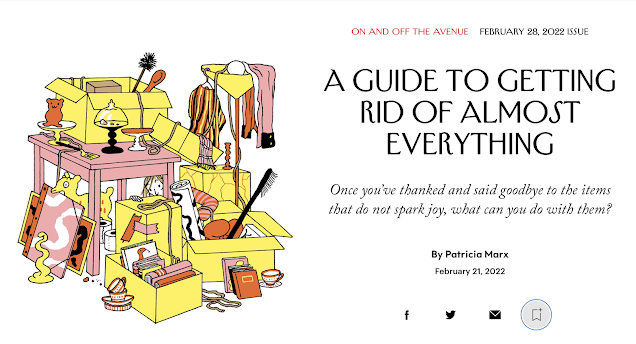Agnès Varda and JR: "Faces Places"
To say I recommend "Faces Places" (French title, "Visages, Villages") is like saying I recommend art. Just see it any way you can. It is not high art, but it is profound, funny, moving and arresting.
Varda, one of my personal heroes, teams with the photographer and muralist JR, whose circle of faces around the Pantheon's dome literally stopped me in my tracks when I came upon it in Paris.
What JR does is not so much original as beautifully-observed; he is the Avedon of street photography.
Together, they take a road trip through French villages, where JR and his team photograph ordinary people, living and dead, and post the huge images on local walls, very soon after taking the shots. This woman, who lives in the house where she was born, began the project impassive and stolid, and ended claiming not only her roots but her individuality:
In between those meetings, which Varda supports through her remarkable rapport and warmth, the two explore her aging. JR is a compassionate but never condescending witness, a friend who does not fawn, an artist who holds his own in concert with the renowned director.
Many readers will see this with English subtitles, which I hope capture the tart, unsparing dialogue between the two, and the obvious affection Varda has for both her protegé and sweets.
If you don't think you'll ever access the film, you can read an excellent review here, but it includes every spoiler going, so don't peek if you think there's a chance you'll see it.
What do you wear in your late 80s? Varda has always been an exuberant dresser, she wears 'costumes' both on and off camera, the expression of nine decades of creative energy.
Her signature two-tone hair seems to be achieved, I saw during the film, by colouring fully, then growing out so there's a band of auburn against the pure white crown, though it does look like the red rim is refreshed. She says, "I hated myself totally white, so now I cheat. It's my white hair, and I put colour there. My grandson says I'm punk."
They photograph the working person: waitress, farmer, postal worker; a dockworker's wife who drives a truck. Schoolteachers and children pose and picnic together, then stand before JR's monumental mural. It is a story of friendships both abiding and fragile, of the comforts of a cup of tea, the charm of a train ride, and the sheer fun of singing to the radio on a road trip.
Varda, who is 88, says this may well be her last film; she is losing her vision, which is another subject of "Faces Places". I am grateful she made it, because she still sees more than nearly everyone else around her.
As Scott Tafoya wrote, when he interviewed her for this film, "We're lucky to have Varda, whose images have always been joy bathed in light. "
Varda, one of my personal heroes, teams with the photographer and muralist JR, whose circle of faces around the Pantheon's dome literally stopped me in my tracks when I came upon it in Paris.
 |
| Photo: JR, jr-art.net |
Together, they take a road trip through French villages, where JR and his team photograph ordinary people, living and dead, and post the huge images on local walls, very soon after taking the shots. This woman, who lives in the house where she was born, began the project impassive and stolid, and ended claiming not only her roots but her individuality:
In between those meetings, which Varda supports through her remarkable rapport and warmth, the two explore her aging. JR is a compassionate but never condescending witness, a friend who does not fawn, an artist who holds his own in concert with the renowned director.
Many readers will see this with English subtitles, which I hope capture the tart, unsparing dialogue between the two, and the obvious affection Varda has for both her protegé and sweets.
If you don't think you'll ever access the film, you can read an excellent review here, but it includes every spoiler going, so don't peek if you think there's a chance you'll see it.
What do you wear in your late 80s? Varda has always been an exuberant dresser, she wears 'costumes' both on and off camera, the expression of nine decades of creative energy.
Her signature two-tone hair seems to be achieved, I saw during the film, by colouring fully, then growing out so there's a band of auburn against the pure white crown, though it does look like the red rim is refreshed. She says, "I hated myself totally white, so now I cheat. It's my white hair, and I put colour there. My grandson says I'm punk."
They photograph the working person: waitress, farmer, postal worker; a dockworker's wife who drives a truck. Schoolteachers and children pose and picnic together, then stand before JR's monumental mural. It is a story of friendships both abiding and fragile, of the comforts of a cup of tea, the charm of a train ride, and the sheer fun of singing to the radio on a road trip.
Varda, who is 88, says this may well be her last film; she is losing her vision, which is another subject of "Faces Places". I am grateful she made it, because she still sees more than nearly everyone else around her.
As Scott Tafoya wrote, when he interviewed her for this film, "We're lucky to have Varda, whose images have always been joy bathed in light. "





Comments
http://cinemabeaubien.com/fr/film/visages-villages_fr
Did you happen to see the recent JR mural installation on the US/Mexico border of the Giant Child? A commentary on DACA, I suppose. He followed that with a Giant Picnic at the border and Eyes of a Dreamer mural. Both fantastic works that say so much with images.
Catherine